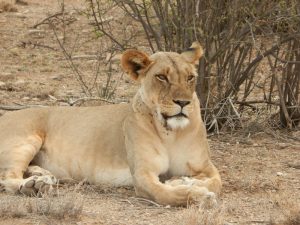Lifespan of gorillas how long do Gorillas live?
In the lush and enchanting landscapes of Central Africa, where dense rainforests echo with the calls of wildlife, the mountain gorilla stands as an iconic symbol of strength and resilience. Abunda Discoveries Uganda invites you to embark on a journey into the realm of gorillas, unraveling the mysteries of their lifespan and gaining insights into the stages of life that shape these remarkable beings.
Species Variations: Gorillas are divided into two main species
The Western gorilla (Gorilla gorilla) and the Eastern gorilla (Gorilla beringei). Each species further consists of subspecies, including the Western lowland gorilla, Cross River gorilla, and the Eastern lowland gorilla. Lifespan can vary slightly among these groups.
General Lifespan:
In the wild, gorillas typically have a lifespan ranging from 35 to 50 years. However, the exact lifespan can be influenced by factors such as habitat, diet, health, and the presence of predators or human-related threats.
Captive Lifespan:
Gorillas in captivity often experience different lifespans compared to their wild counterparts. In well-managed zoos and sanctuaries, where they receive specialized care, gorillas can live into their late 40s or even early 50s.
Infant Mortality:
The early years of a gorilla’s life are particularly vulnerable. Infant mortality rates can be high due to various factors, including predation, disease, and environmental threats. Gorilla mothers play a crucial role in protecting and nurturing their offspring during this vulnerable period.
Adolescence and Social Bonds:
As gorillas enter adolescence, they begin to form and strengthen social bonds within their groups. These relationships play a vital role in their overall well-being, contributing to their ability to navigate the complexities of their environments.
Silverbacks and Maturity:
Male gorillas, known as silverbacks, typically reach maturity between the ages of 12 and 15 years. The silverback stage is characterized by the development of silver-gray hairs on their backs, signifying their readiness to lead a family group.
Reproductive Years:
Female gorillas become sexually mature between the ages of 6 and 8 years. They enter their reproductive years, during which they can give birth to offspring. The ability to reproduce is a critical aspect of ensuring the survival and continuity of gorilla populations.
Challenges to Lifespan:
Gorillas face numerous challenges that can impact their lifespan, including habitat loss, poaching, and diseases transmitted by humans. Conservation efforts, such as those undertaken by organizations like Abunda Discoveries, play a vital role in mitigating these threats and safeguarding gorilla populations.
Conservation Impact:
Efforts to protect and conserve gorilla habitats contribute significantly to their overall lifespan. Sustainable tourism, responsible trekking practices, and community engagement initiatives help ensure a harmonious coexistence between gorillas and their human neighbours.
Endearing Legacy:
The lifespan of a gorilla extends beyond individual years, leaving an endearing legacy within their social groups and the ecosystems they inhabit. By understanding and respecting the natural lifecycle of gorillas, we contribute to the ongoing conservation of these magnificent creatures.
Conclusion:
As custodians of the natural world, Abunda Discoveries Uganda invites you to marvel at the intricate tapestry of time woven into the lives of gorillas. From the vulnerability of infancy to the wisdom of silverbacks, each stage of a gorilla’s life contributes to the rich biodiversity of Central Africa. By embracing responsible tourism and conservation initiatives, we play a pivotal role in ensuring the continuation of their extraordinary journey through the forests, leaving a lasting legacy for generations to come.




